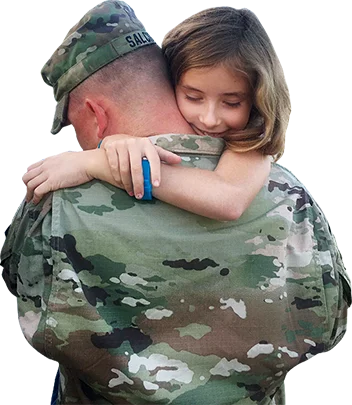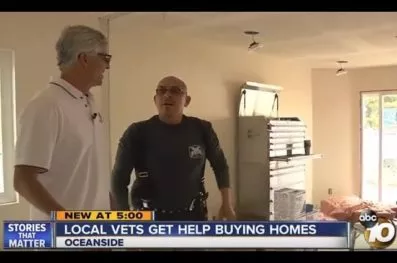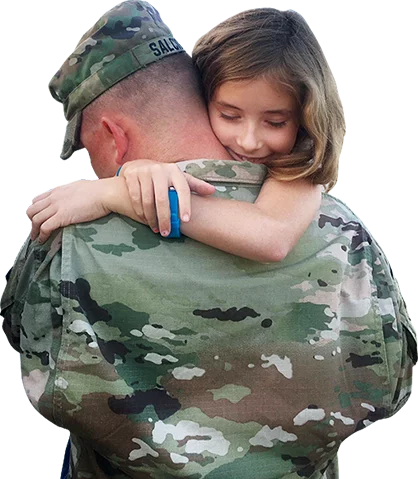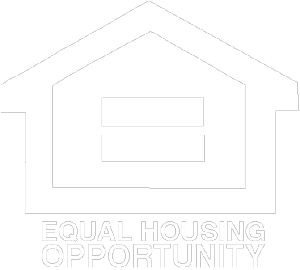Truth About VA Construction Financing

Va Loans
REAL ESTATE FOR VETERANS
VA Construction Financing
VA Construction and Renovation Loans

Peter Van Brady
Founder of SoCal VA Homes
Author: Avoiding Mistakes & Crushing Your Deals Using Your VA Loan
In our experience there are two types of clients who consider building a home using their VA Home Loan Benefit. The first type of client typically desires more of a “rural” living experience – more land and more open space than that which is available from a typical Southern California “tract” home. We understand this desire…perhaps to recreate an environment that feels more like home, maybe where you grew up in the Midwest. If you fall into the second group, you may have started your home search and come to the conclusion that, “This is tough going - it’s a competitive game trying to buy a home using my VA.” Many VA buyers in various markets also arrive at this same conclusion. Some buyers are even driven to the thought that, “Hey, if I can’t easily buy a home on the market, why don’t I build my own? I’ll show THEM that I can get a home! Maybe I can even get a custom home built in a peaceful location…ahhhh, this will be great!” Yes…we’ve heard this many times.
You’re not alone. Many ambitious and frustrated VA buyers have walked down this path before you. We encourage your enthusiasm, so we’re going to clearly describe the challenges you face as your pursue this goal. There are solutions, but approaching your task with eyes wide open will be necessary for survival and success. When trying to borrow this money to buy a piece of land and build a home, you’ll be better prepared if you understand the lender’s point of view. This is risky business.
To chase this dream of building your home, it’s important to understand how the “VA Guaranty” on “VA Construction Financing” minimizes the risk for the lender. Let’s first define the VA Guaranty. The VA Guaranty binds The United States Department of Veterans Affairs and a lender together for the purpose of reducing the lender’s risk. Lenders are institutional, private enterprise, for-profit, non-government entities, typically a bank or mortgage company. Provided the loan package meets all the VA loan underwriting guidelines, the contract between the VA and the lender says that the VA will protect the first 25% of the loan balance against loss, should the borrower fail to repay the loan.
If the borrower defaults on the payments, the lender will foreclose on the house and may suffer a loss when the home is resold. If the risk was properly measured in underwriting, the loss will hopefully be less than 25% of the original loan balance when the home is resold. In this case, the lender will have not suffered any financial loss and the mechanism between the VA and the lender will have performed as planned. The VA Loan Guaranty is paid for from an “insurance pool” funded by the “VA Funding Fee.” This is an insurance premium or fee that is added to the loan balance, and directly paid to the VA from the lender after funding. Because it is part of the loan balance, it is paid for over the life of the loan by the borrower.
Obviously the VA Home Loan Benefit has plenty of advantages, including no down payment, more forgiving credit guidelines, and competitive interest rates. However, despite the existence of such a program, there are few (if any) lenders who will take the multiple layers of risk involved to make a construction loan, with a VA Guaranty. If you are going to be successful in your quest to build a home using VA construction financing, you’ll need to clearly understand the lender’s point of view – their RISKS.
Lenders making VA loans operate from self-interest. They are primarily motivated by earning profit. When deciding to make a loan or not, no “charitable thoughts” are part of the process. Again, VA loans are not provided directly from the government. And because lenders are not willing to undertake unreasonable risks, it is very difficult (but not impossible) to get VA construction financing or a VA construction loan. From their perspective, if they have to foreclose, what factors below will cause a loan loss to exceed the 25% VA Loan Guaranty?
Risks Associated with the Economy (During Construction)
Risks Associated With Financing or Owning Undeveloped Land
Risks Associated With the Quality and Integrity of the Appraised Value
Risks Associated with the Blend of Land Value vs. the Newly Constructed Dwelling’s Value
Concerns also exist regarding the land value vs. the “improvements.” The improvements are all the dwellings and amenities built on or into the land. Too much land skews the relationship of land value vs. the dwelling value on the total appraisal value. It’s very difficult for a lender to get comfortable with an appraisal that has those characteristics. As an example, a property with a 1000 square foot home built on a 20 acre parcel is not going to be easily financed. Whereas a 2500 square foot home built on less than five acres is going to have a better chance at getting a loan. Land-only prices and values tend to be more volatile over time. Recognizing this, lenders don’t like homes with lots of acreage and small dwellings. They prefer the opposite - big dwellings and less land equal less risk.
In our market in Southern California, there is tremendous housing density. Yet, on a home just outside of densely populated areas such as in East San Diego County, appraisals can be difficult for these reasons mentioned. This is a point of frustration for VA borrowers who are abundant in San Diego. Many want to build in a more rural setting. Don’t give up on your dreams, sometimes it can be done!
Risks Associated With the Contractor Responsible for Completion of Construction
Risks Associated with the Borrower’s Changing Qualifications
Reducing Risks with Two Step Construction Loans
In conventional construction financing, there are typically two types of construction loans or processes. The first and much more common construction loan process is a two-step process. The first step is the construction financing. This loan is wholly and separately underwritten for its own merits based on lender profitability and its associated risks of loss. When the construction of the home is complete, the second step or “permanent financing” is applied for separately. It is underwritten, funded and closed in the same way all other conventional loans are performed. This two-step closing process breaks the risk associated with the entire project into two separate pieces.
The second type of conventional construction loan in the marketplace is a single step or “single-close” loan called a “construction-to-permanent” loan. As of the second edition of this book in 2016, one source, and only one source that we are aware of, is attempting to fund “VA construction-to-permanent” single-close loans. Much of the same risks outlined above need to be addressed by the lender to make a success of this channel of business. It’s difficult, but it is possible.
All Risks Accounted for…How to Get What You Want Using Your VA Home Loan Benefit
Unfortunately, there is a lot of misleading information online regarding the subject of VA construction loans and VA construction financing. With the limited information from the U.S. Department of Veterans Affairs available on the va.gov site, you might be led to believe that these loans readily exist. When you search for information online, it’s not uncommon for lenders to “bait” you with advertisements, where they dangle a carrot of the possibility of a VA construction loan to get your attention. Once they have your attention and get your hopes up, they glaze over the reality or try to “switch” your attention to applying for a typical VA loan. I guess they hope you change your mind about your dreams of building a home, and you return to them to discuss a typical VA loan.
It is important that you get this information now, and that you know the challenges right from the start. Again, VA construction financing or a VA construction loan is a rare breed indeed. The reality is about reducing risk for the lender. It can be done under the right circumstances. So what does all this mean for you?
SoCal VA Homes was created especially to address the limitations of the VA loan. Our innovations have created possibilities for active military and Veteran home buyers that didn’t previously exists. Two possibilities exist for you in your quest to utilize your VA Home Loan Benefit to achieve a custom constructed home. Utilize our single-close construction-to-permanent VA loan. Again, this will mean that all the right circumstances exist to minimize the lender’s risk.
Your second option is to take advantage of our SoCal VA Homes Dreamweaver Home Purchase Process™. With this process, you tell us where you want to live and the ideal elements and amenities you want your home to have. SoCal VA Homes can then purchase the lot and build the home you want with our cash. You can literally build your dream house for zero down and zero closing. When the construction is fully completed, the home is transferred (sold) to you by using your VA financing to conclude the purchase. It’s a TALL order, and it may sound too good to be true, but if you view the video testimonials on our website, you’ll see the results we’ve delivered for our clients.
As Seen on ABC 10 5:00 O’Clock News








